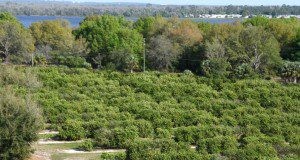Abstract
Geographic information system (GIS) software packages can be prohibitively expensive, causing many to shy away from mapping and spatial analysis. This 7-page fact sheet written by Jeffry M. Flenniken, Steven Stuglik, and Basil V. Iannone III and published by the UF/IFAS School of Forest Resources and Conservation introduces the reader to a free GIS software package called Quantum GIS (QGIS), walking the reader through simple GIS processes that can be used to visualize spatial patterns of importance to a variety of fields, including natural resources, agriculture, and urban planning. Learn how to create a land-cover map for a county of interest and create heatmaps that illustrate the density of a given attribute (Florida Springs for this example). This publication will benefit those interested in incorporating GIS into their work but who are unable to afford expensive proprietary GIS software packages, as well as anyone interested in learning a new GIS software package.
https://edis.ifas.ufl.edu/fr428
Unless otherwise specified, articles published in the EDIS journal after January 1, 2024 are licensed under a Creative Commons Attribution-NonCommercial-NoDerivs 4.0 International (CC BY-NC-ND 4.0) license.


